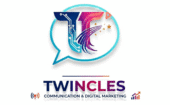Modern consumers expect more than generic, one-size-fits-all digital interactions. They expect brands to know them, understand them, and tailor content, offers, and communication to their unique preferences and behaviors. This expectation is why personalization has become a critical component of digital marketing success.
Whether it’s recommending the right product, sending a timely message, or creating a relevant ad experience, personalization drives deeper engagement, higher conversions, and stronger brand loyalty.
In this blog post, we’ll explore the importance of personalization in digital marketing, how it works, and actionable strategies to make it work for your brand.
1. What Is Personalization in Digital Marketing?
Personalization refers to the practice of delivering **customized experiences** based on data collected about users. This data could include demographics, past behavior, preferences, purchase history, browsing activity, and even real-time context like location or device.
Personalization can take many forms:
– Email marketing with personalized subject lines and product suggestions
– Content that shifts dynamically based on how visitors engage
– Personalized ads based on browsing history
– Chatbots that greet users by name and offer relevant support
2. Why Personalization Matters More Than Ever
📈 Consumer Expectations Are Changing
Today’s digital-savvy customers are used to platforms like Amazon, Netflix, and Spotify offering ultra-personalized recommendations. They now expect the same level of relevance from every brand they engage with.
According to Salesforce, 66% of customers expect companies to understand their unique needs and expectations.
💡 Business Impact
Personalization goes beyond hype — it drives real, quantifiable impact:
* Personalized emails generate 6x higher transaction rates
* 80% of consumers are more likely to buy from a brand that offers personalized experiences
* Companies using personalization see an average 20% increase in sales
3. Types of Personalization in Digital Marketing
A. Content Personalization
Adapting content to suit the user’s interests, stage in the funnel, or past behavior.
Example: Showing beginner-level blog posts to new users and advanced guides to returning visitors.
B. Email Personalization
Customized subject lines, tailored content, product recommendations, or even sending times based on user behavior.
Example: “Hi Sarah, here’s your top pick for summer dresses!”
C. Website Personalization
Dynamic landing pages or homepage banners that change based on the user’s geography, past interactions, or traffic source.
D. Product Recommendations
AI-powered suggestions like “Customers who bought this also liked…” based on browsing or purchase behavior.
E. Advertising Personalization
Retargeting ads that showcase products a user viewed, or personalized offers based on cart abandonment.
4. The Technology Behind Personalization
To implement personalization, businesses rely on various tools and technologies:
* CRM systems (like HubSpot or Salesforce) to manage customer data
* Marketing automation platforms (e.g., Mailchimp, Active Campaign)
– Predictive analytics powered by artificial intelligence.
– Experience optimization platforms like Optimizely or Dynamic Yield.
– Audience segmentation tools and unified data platforms.
5. Benefits of Personalization
✅ Higher Engagement Rates
Tailored content captures attention, lowers bounce rates, and encourages longer site visits.
✅ Increased Conversions
Personalized product suggestions, tailored messaging, and offers lead to better decision-making and faster conversions.
✅ Improved Customer Retention
Customers are more likely to return to a brand that “gets them.” Personalization strengthens emotional connections.
✅ Better ROI
By targeting the right user with the right message at the right time, personalization helps reduce wasted ad spend and boosts marketing efficiency.
✅ Enhanced Brand Loyalty
Brands that consistently offer tailored experiences are perceived as more thoughtful and customer-centric.
6. Real-World Examples of Personalization
🛒 Amazon
Known for its highly effective recommendation engine, Amazon personalizes everything from homepage content to email offers, increasing conversions dramatically.
🎵 Spotify
“Discover Weekly” and “Made for You” playlists keep users engaged by delivering highly personalized music selections.
✈️ Booking.com
Utilizes browsing behavior to offer location-based hotel suggestions and urgency messaging like “Only 2 rooms left!”
📧 Grammarly
Sends customized usage reports and writing insights based on individual user activity and preferences.
7. How to Build a Personalization Strategy
Here’s a roadmap to start integrating personalization into your digital marketing:
1. Collect the Right Data
Use cookies, sign-up forms, purchase data, and behavioral tracking tools. Always get user consent and stay compliant with privacy regulations like GDPR or CCPA.
2. Segment Your Audience
Group users based on shared characteristics — such as age, location, purchase history, or interests — for more precise targeting.
3. Define Your Personalization Goals
Decide if you’re aiming to boost sales, reduce churn, increase engagement, or improve loyalty.
4. Choose the Right Tools
Invest in CRM, email marketing, analytics, and automation tools that support personalization capabilities.
5. Create Dynamic Content
Create targeted emails, ads, and web pages that respond to individual user preferences and actions.
6. Test and Optimize
Run A/B tests to understand what personalization elements drive results. Continuously refine based on performance.
8. Challenges and Ethical Considerations
While personalization has great potential, it must be handled responsibly.
⚠️ Key Challenges:
– User privacy concerns: Excessive tracking can erode trust and deter engagement.
– Data quality: Inaccurate or incomplete data can lead to irrelevant experiences.
– Over-personalization: Too much targeting can feel creepy.
✅ Best Practices:
* Be transparent about data usage
* Give users control over their preferences
* Balance relevance with respect for privacy
9. The Future of Personalization
Looking ahead, personalization will become:
– Hyper-personalized using AI to predict needs before users express them
– Consistent messaging and engagement across all platforms — digital and real-world
– Voice- and AR-driven, where smart assistants and immersive technology offer tailored interactions
The brands that win will be those that blend human empathy with machine intelligence to deliver meaningful experiences at every stage of the journey.
